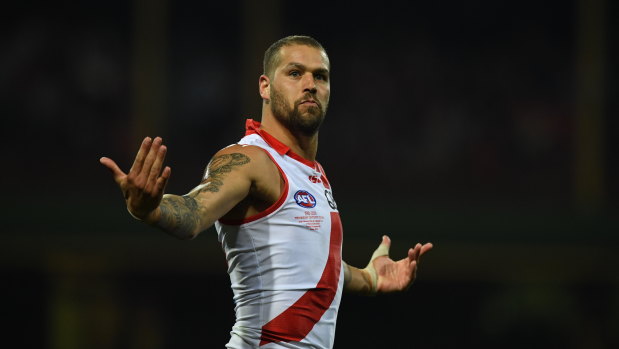By Peter Ryan
Click on each player in our interactive team of the decade to find out more, and tell us what you think.
It's hard to believe 10 seasons have passed since Dustin Martin made his debut for Richmond in the opening game against Carlton at the MCG as the Blues trounced Richmond by 56 points.
In that time Martin has won a Brownlow Medal, two premierships, three club best-and-fairest awards and four All-Australian guernseys to enter 2020 as the best player in the game.
He exemplifies the very modern midfielder with his irresistible combination of power and skill, breaking open the contest in the middle of the ground before going forward and kicking goals.
The decade was influenced more than ever by coaches, whose tactics and counter-tactics sometimes made it difficult for individuals to influence matches. In this way, it was the decade of the game plan.
Scores were low – with an average of 176 points per game it was the lowest-scoring decade since the 1960s. Footy in the 2010s was a much more congested game than in the previous decade; in 2019 an average of 62 tackles were laid per game, compared with 32 in 2000.
Martin was the easiest inclusion in our team, in which players are selected in position. The final 22 is certain to upset many, particularly fans of those who had legitimate claims to be considered but ultimately did not make the cut.
Some, for example, will be aggrieved about the omission of Carlton pair Chris Judd and Patrick Cripps – Judd did his best work for West Coast in the previous decade and retired in 2015, while Cripps promises to be a superstar of the next decade.
Richmond's Trent Cotchin and Jack Riewoldt, Fremantle's Matthew Pavlich and Michael Walters, the Giants' Callan Ward and Jeremy Cameron, Port Adelaide's Travis Boak, Sydney's Dan Hannebery, Geelong's Tom Hawkins, Hawthorn's Tom Mitchell and former Crow-turned-Blue Eddie Betts can all be considered unlucky to miss out.

Buddy brilliant: Lance Franklin is the glamour forward of the decadeCredit: AAP
The ruck spot is a category all on its own with Melbourne's Max Gawn, Collingwood's Brodie Grundy, the Giants' Shane Mumford and West Coast's Nic Naitanui all deserving of consideration. For dominance over a long period, Aaron Sandilands just had that field covered.
There was fierce competition, also, for the running defender and medium-sized forward positions.
This was the first decade since the 1920s when no player kicked 100 goals in a season, but there were still some brilliant glamour forwards headlined by the Hawk-turned-$10 million-Swan Lance Franklin. Richmond's Riewoldt was desperately unlucky not to be selected at full-forward. West Coast's Josh Kennedy was a team player from start to finish while Riewoldt took time to get there.
Hawthorn and Richmond, as the only teams to win multiple flags in that time, and Geelong and Sydney, who have been constant contenders, make up the bulk of the selected players.